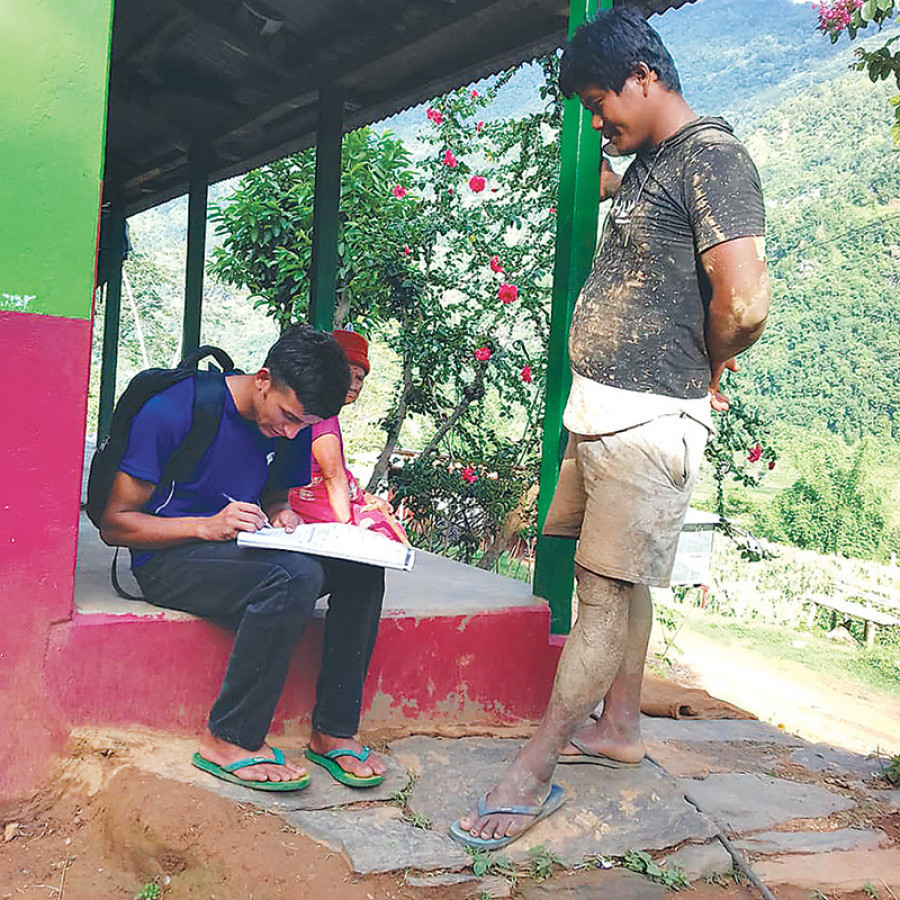National
All census-related work halted due to pandemic
The 2021 decennial census was to be the most comprehensive census ever.
Prithvi Man Shrestha
With the government deciding to halt all preparatory work for the population census 2021 scheduled for June 8-22, it is uncertain when the census will be conducted as Covid-19 pandemic continues to create havoc in the country.
Parbat Gurung, minister for communication and information technology, said a Cabinet meeting on Sunday decided to halt all the census-related work due to the ongoing Covid-19 pandemic.
“Another decision will be taken if we are to conduct the census,” Gurung told the Post on Monday.
Officials at the Central Bureau of Statistics, which conducts the census, say setting a new date for the census will depend on when the situation normalises and lockdowns are lifted and if the current situation prolongs, it will be difficult to conduct census at least for a year.
“We have recruited supervisors and enumerators for a short period. So, there is a question about whether we can retain their services beyond their contract deadline,” said Nanda Lal Sapokta, statistics officer at the bureau. “If we have to recruit new supervisors and enumerators, we have to prepare training materials and make necessary procurement which are time-consuming.”
However, Nebin Lal Shrestha, director general at the bureau said the bureau aimed to conduct the census in 2078 BS (by mid-April 2022) even if a few months lapsed due to the pandemic-related concerns.
Before the latest cabinet decision to halt the preparatory work for the census, the bureau had completed the training for trainers and it was providing training to supervisors–the ones who are supposed to oversee the work of enumerators.
The enumerators were supposed to be trained starting from June 3 before starting counting of population starting from June 8. The bureau has already appointed 39,000 enumerators and 8,000 supervisors for the census 2021.
Under the population census, there are two main tasks —listing of households and the main population census.
The bureau was planning to send the supervisors to the field starting from May 9 for listing of the households and they were supposed to reach every household and find how many houses, families and family members there are in each family. The listing task, scheduled to be run till May 28, was also supposed to give a rough estimate of the population which will help the bureau divide responsibilities for each enumerator during the main population count.
According to the bureau, the listing also gives a framework about the households involved in farming and it will help the bureau to conduct an agricultural census that the bureau conducts six months after the population census every 10 years.
Shrestha said that with the government’s decision, the task of household listing would be affected.
“Without listing households, we cannot conduct the main census,” said Shrestha. “Therefore we want to conduct at least the listing of households in the current fiscal year. For this, lockdowns should end and situations should normalise to a larger extent.”
Earlier, in 1951, the population census was postponed by a year after democracy was introduced in 1950 by abolishing the autocratic Rana rule, according to the bureau. At that time, census was conducted from 1952-1954.
Before the latest cabinet decision, the bureau had recommended deferral of the preparatory works.
According to Hem Raj Regmi, deputy director general at the bureau, his office recommended postponing the ongoing activities for the time being in areas badly affected by the pandemic and the locations where lockdown and other prohibitory orders have been put in place.
Covid-19 cases have been on the rise in recent weeks even though the country reported less than 100 cases most of the days in March.
On Monday, the Ministry of Health and Population reported new record high daily infections of 7,388 by breaking the previous day’s record of 7,137 infections.
Nepal last conducted its census in 2011 when the country’s population stood at 26.5 million. Projections suggest the population could have now increased to around 30 million.
The Central Bureau of Statistics has said this census would be the most comprehensive ever, with enumerators asking for details from households also about the livestock, household amenities and community infrastructure.
Moreover, instead of using a sampling method to infer larger trends in the population, the bureau has plans to reach out to every household and collect data directly, thereby creating a clearer picture.
The bureau has been conducting a decennial population census since 1911 . However, the first modern population census of Nepal was conducted in 1952-54 and counted a population of over 8 million.
Census information has been widely used for diverse purposes, but especially in development planning and policymaking.
Nepal’s constitution has also mentioned the importance of the census data. Article 281 of the constitution states “The Government of Nepal shall make appraisal and review of the implementation of special rights of the women and Dalit community and impacts thereof, on the basis of human development index, concurrently with a national population census to be held in every ten years."
Similarly, according to Article 84 (2), House of Representatives under the proportional electoral system, representation shall be ensured on the basis of a closed list also from women, Dalit, indigenous peoples, Khas Arya, Madhesi, Tharu, Muslims and backward regions, on the basis of population.




 8.12°C Kathmandu
8.12°C Kathmandu
%20(1).jpg&w=200&height=120)














